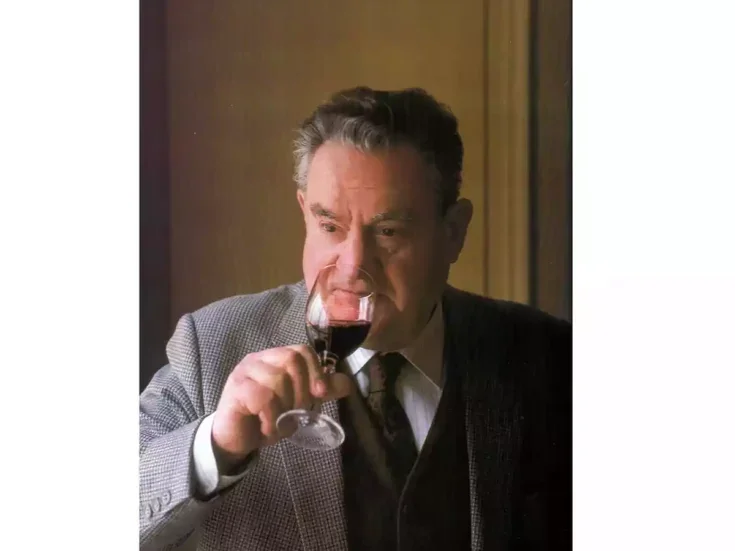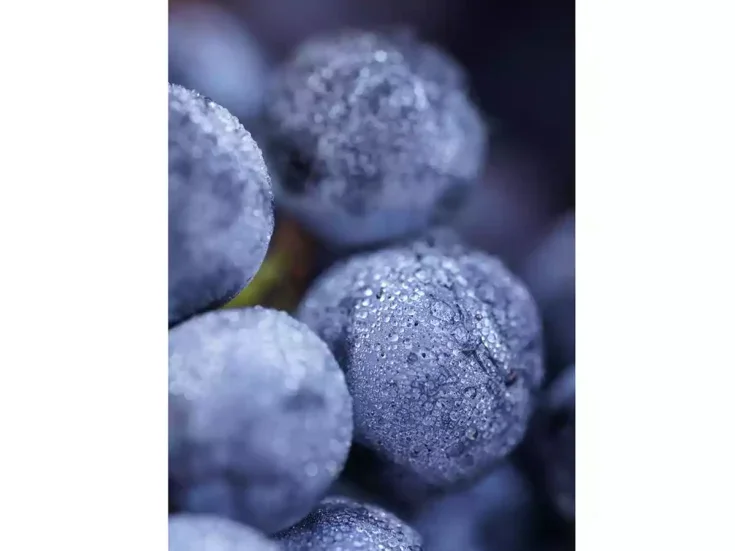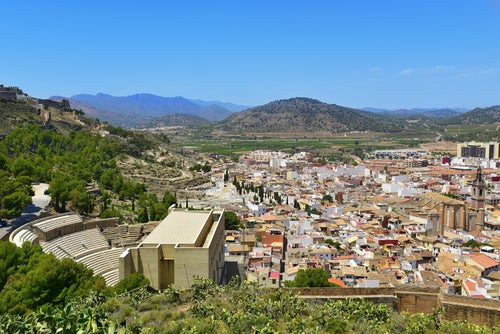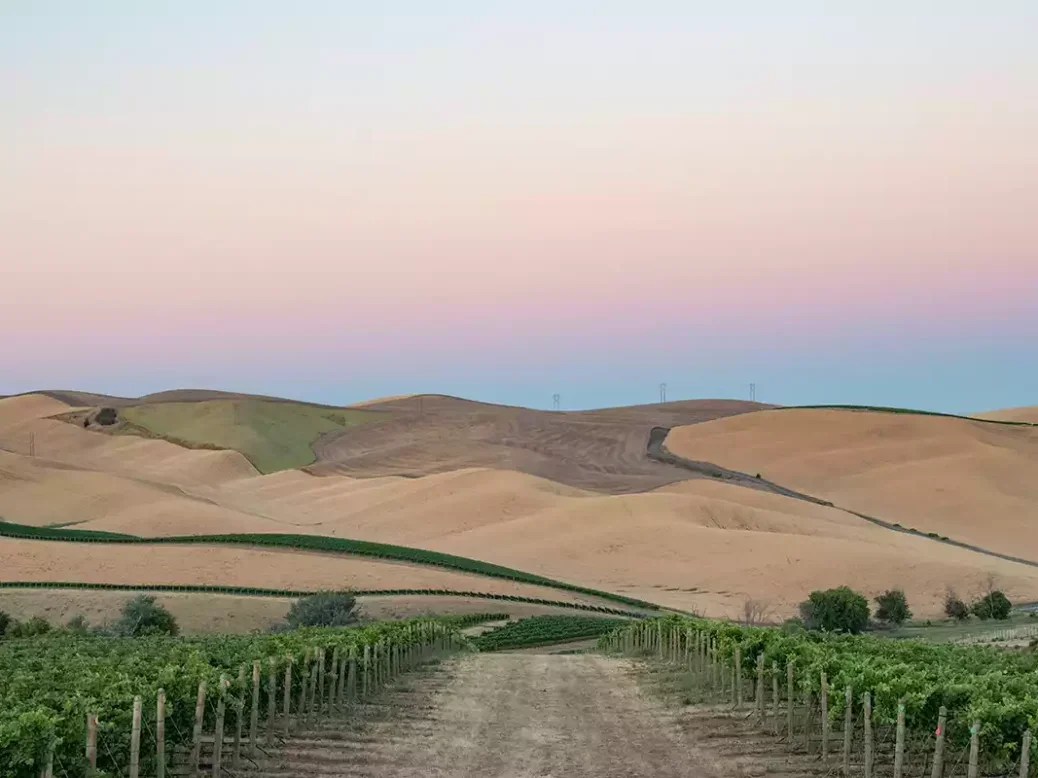
Wine drinkers of Washington State are well familiar with the quality of the state’s wines: An estimated one of every four bottles consumed in the state is local. But as the state’s wine industry celebrates a number of anniversaries—this year, 150 years since the founding of the state’s first winery, and next year, 200 years since the first vineyard was planted—its winery members increasingly wonder how to connect with wine drinkers beyond the state’s borders, to build a sustainable clientele, and to grow.
That last question is particularly vexing, because last summer the state’s largest producer, Ste Michelle Estates, announced that it would be reducing its grape purchases by 40% over the next five years. The decision directly affects about 10,000 acres (4,000ha) of vines—almost 17% of the state’s 60,300 acres (24,400ha) of vineyard land—and will likely have a dramatic impact on prices for anyone selling wine grapes in the state.
Chateau Ste Michelle’s roots reach back to the post-Prohibition 1930s and the creation of National Wine Company and Pommerrelle. In 1954, the two merged to form American Wine Growers. Aside from the merger, the new company would also make the first steps toward what we would call premiumization today. Both had focused on cheap wine and worked mostly with native American and hybrid varieties, though National had begun planting vinifera varieties, starting with Grenache, in the Columbia Valley as early as 1951. In 1965, it planted its first Riesling vines in the Yakima Valley, and the grape variety would become synonymous with the Ste Michelle brand, which launched two years later. Within a decade, that brand became so important that the company changed its name to Ste Michelle Vintners.
In some vintages, Ste Michelle has accounted for as much as two thirds of Washington’s wine production, divided among brands ranging from the super-premium Col Solare to the sub-$10 Columbia Crest. Sycamore Partners purchased Ste Michelle Estates in 2021, and observers soon blamed the new ownership for an apparent change in approach. But Ste Michelle’s cheaper brands like Columbia Crest had already been struggling in the stagnant budget-pricing tiers, and the company had actually begun scaling back on purchases as early as 2016; the 2023 announcement was dramatic but was in keeping with trends within the company and the market in general. With this latest cut, Ste Michelle Estates’ vineyard sources will be reduced to half the size they were before 2016.
Speculation is rife about what will become of the 10,000 acres’ worth of grapes. Some look to enterprising California companies to step in, purchase the fruit, and invest in the state, but so far no one has made any substantial moves. In fact, Gallo, which purchased two of Washington’s larger wineries, Columbia Winery and Hogue Cellars, in 2019, sold them off to Seattle-based Ackley Brands this past April; Ackley plans to grow the brands, so perhaps there’s some hope that it will pick up some of the slack. At the moment, total production of the two wineries is just over 130,000 cases. Woodinville-based DeLille Cellars also seems well positioned to expand its production. With almost 1,100 licensed wineries, Washington is teeming with producers. But 90% produce fewer than 5,000 cases of wine each year. There aren’t enough wineries with the scale, capacity, and cash flow to absorb all the tonnage coming into the market.
Despite the impressive number of wineries, Washington is home to just 400 grape growers, the result of the state’s history of expansive ranches and wheat farms and a system of water rights that favors large-scale farming. One hope for these grape farmers lies north of the Washington border. British Columbia’s Okanagan Valley suffered a devastating deep freeze in January 2024, meaning that there would effectively be no wine harvest this year or for several years to come, as growers with the means engage in massive replanting efforts. With one industry suffering from a surplus and another desperate for something—anything—to vinify, talks have been in the works for some time. With the announcement in July that British Columbia would allow wineries to work with grapes from outside the province for at least the 2024 vintage, deals are already being struck that should provide some relief to both industries.
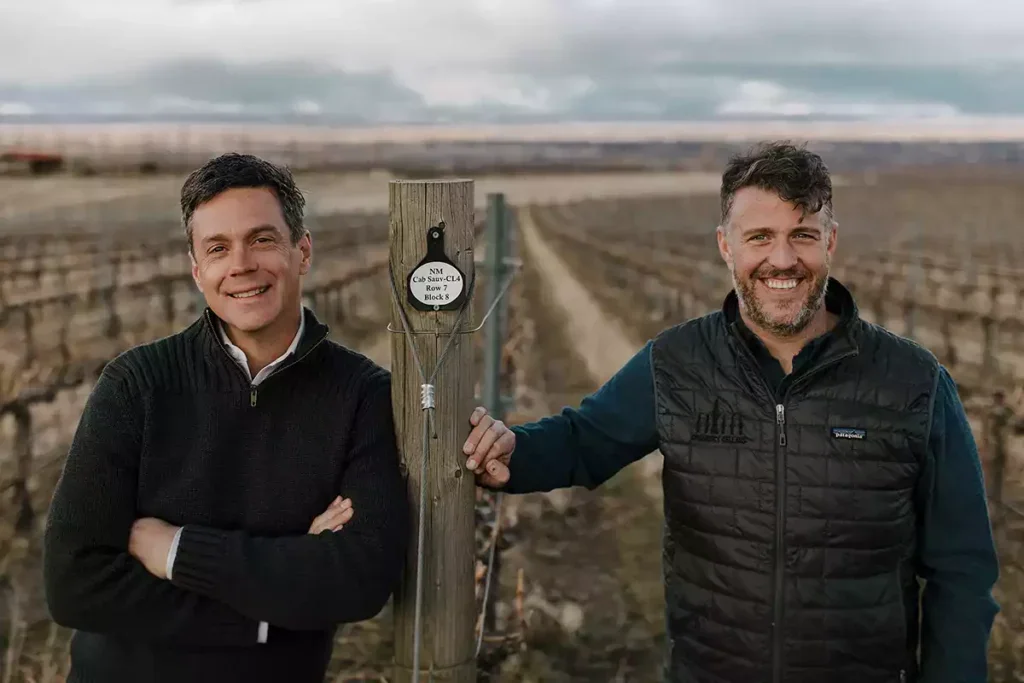
While the structure of Washington’s industry, with such a large proportion of vine area destined for one company, adds some drama to the story, the hand-wringing over these forsaken grapes is, most likely, really just a local manifestation of the global industry’s struggles with overproduction. Even before Ste Michelle’s announcement, the Washington Winegrowers Association had called for a 10,000-acre reduction in plantings focused on diseased and unproductive vines.
Washington State wine: Premium potential
Ste Michelle’s shift, and the shift facing Washington State wines as a whole, center on the now oft-repeated observation that people are drinking “less but better.” As the Seattle-based blogger Mike Veseth of The Wine Economist has noted, in the Pacific Northwest, Oregon has defined itself around a grape variety, but Washington built its identity around a price point—the under-$10 price point that consumers are less and less inclined to bother with. That reputation centers on overdelivering in that price range, which suggests that, with appropriate viticultural changes, the relevant vineyard plots are indeed capable of providing grapes suited to higher, premiumized price points. Contracting by acreage rather than tonnage—the norm in Washington—allows wineries and growers to work together on the farming approach; if the adjacent plot has been supplying a top Cabernet producer, it’s likely that an abandoned plot that had been farmed to produce budget-driven wines will be able to reach similar levels of quality if pruned and managed with the same goals.
Contrast that with California’s Central Valley. At the Unified Wine and Grape Symposium in January, Jeff Bitter, president of Allied Grape Growers, called for nearly 50,000 acres (20,000ha) of California vines to be ripped out in an effort to restore balance to the state’s wine industry. A huge chunk of that would come from the San Joaquin Valley and Sacramento Delta areas. There’s no talk of revamping these vineyards for premium-wine production—they aren’t up to it and simply need to go. In Washington, there’s no single region whose fate is so singularly tied up with high-yield, budget-quality wines; the problem is spread across most of the vast Columbia Valley AVA that encompasses almost all of the other AVAs in the state.

Although the impact on grape prices may be felt across the Washington State wine industry, there are a number of vineyards that have established reputations that will protect them from the worst of it and that can provide role models for those struggling to adjust to new realities. Dick Boushey, for example, first planted grapes in the Yakima Valley in 1980; he started with Cabernet Sauvignon and Merlot but soon developed a reputation for Rhône varieties. His client base has grown to include about 50 wineries now, many of whom make Boushey Vineyard designated wines. His own vineyards have expanded to encompass 286 acres (116ha), but he also consults for a number of other properties. At this point, he has turned away from further acquisitions to focus on fine-tuning the vineyards he has, tailoring every block in close cooperation with his client wineries and continually experimenting with different clones, trellising, row orientation, and the like.
With so many wineries all sourcing grapes from a smaller number of growers, many brands source widely and are not necessarily identified or associated with a single AVA. DeLille Cellars, for example, features Columbia Valley, Snipes Mountain, Yakima Valley, Red Mountain, Horse Heaven Hills, and White Bluffs on its labels. Many producers use the broad Columbia Valley designation because sourcing fruit from multiple growers within a smaller AVA can be challenging, especially for wines that it hopes to produce in larger quantities, regardless of price point. Much like the “Western Cape” Wine of Origin in South Africa, Columbia Valley is almost as likely to be used for cheap, more generic wines as it is for top-notch, coveted bottlings.
A growing focus on the land
This approach isn’t surprising, considering that in many cases winery and vineyard lie in different parts of the state. Chateau Ste Michelle led the way when it set up in Woodinville, across Lake Washington from Seattle. Dozens of wineries have followed suit, with either actual winemaking facilities, tasting rooms, or other opportunities to bring their brand and its wines closer to the largest concentration of potential wine drinkers in the state; eight of Washington’s largest cities are on the western side of the Cascade Mountains, mostly clustered around the largest, Seattle. With more than 130 wineries calling the city home in some capacity or another, Woodinville is the public face of the industry, and one of the only places in the world that calls itself “wine country” despite an almost total lack of vines.
It’s been incredibly effective in terms of accessing the market, attracting both locals and tourists: almost 40 million people visited Seattle and the surrounding King County last year, and that number was even higher prior to the Covid pandemic. The industry has even divided up Woodinville into subregions, with four areas of the city defined not by terroir but by the character of the wine-tourism experiences that dominate in each.
It does, however, create a disconnect. One can’t imagine tasting a Beaune in Paris and saying one had thereby visited the place the wine came from, 200 miles (320km) away, but Yakima Valley’s vineyards are about the same distance from Woodinville. Similarly, a winery east of the mountains need not have any particular connection to whichever of Washington State’s 20 AVAs it decides to source from. That’s not to say that wines from Woodinville-based wineries can’t rank among the state’s best, as demonstrated by DeLille, Betz Family, Januik, and others. Even farther afield, Andrew Will makes its excellent, single-vineyard wines on Vashon Island, in the Puget Sound while sourcing from its own vineyard, Two Blondes, in Yakima Valley, as well as Champoux Vineyards in the Horse Heaven Hills and Ciel Du Cheval in Red Mountain.
Efforts to bring winery and vineyard closer together have prospered in a few areas. The 40-year-old Walla Walla AVA is home to 135 wineries, including highly regarded names such as Abeja, Leonetti, and L’Ecole #41, as well as more recent entrants such as Devison and Master Sommelier and Doug Frost MW’s new project, Echolands. While many Walla Walla wineries do source from farther afield for some of their wines, there’s a clear interest and investment in promoting the Walla Walla identity; some are even moving to an estate model where they only work with fruit from their own vineyards. More than anywhere else in Eastern Washington, Walla Walla has worked to develop itself as a wine-tourism destination, and tourism infrastructure there has made huge strides.
Leonetti, Walla Walla’s first bonded winery, began that move almost 30 years ago, after a brutal winter in 1996 damaged many of the Eastern Washington vineyards; prior to that they had sourced from vineyards in Walla Walla but also elsewhere in the Columbia Valley. Today, it sources grapes from five sites, all within the AVA, stretching diagonally from southwest of the town of Walla Walla, to the northeast, where its new winery project, Figgins, lies. According to director of winemaking Chris Figgins, this new project, in contrast to Leonetti, will be even more focused on the land itself rather than on the grape variety, with just three wines—two red blends and a Riesling—all sourced from the estate vineyards surrounding the winery.
Despite the saturation of vineyards and wineries in Walla Walla, the identity or specialty of the region, like that of Washington State as a whole, remains inconclusive. I first became excited about Washington State wines—and Walla Walla’s in particular—under the tutelage of Greg Harrington MS, then the beverage director for BR Guest Restaurants in Manhattan. Greg was particularly excited about the potential for Syrah in Walla Walla, and eventually left BR Guest to move there and found Gramercy Cellars. But during a recent visit, Amy Alvarez-Wampfler at Abeja Winery was equally insistent that it was Cabernet Sauvignon that best represented Walla Walla. Syrah does have a place within Walla Walla, she concedes, but in The Rocks District—properly speaking, the Rocks District of Millton-Freewater AVA. Walla Walla, already a sub-AVA of the expansive Columbia Valley, is developing sub-AVAs of its own.
Rocks and Mill Creek
In the Rocks District, the Walla Walla River slows abruptly in its path south from the Blue Mountains; its momentum lost, the current abandoned its load of basalt cobblestones. Eventually, the stones became so numerous that they blocked the river entirely, and it was forced to change course. The resulting alluvial fan provides excellent drainage, with the mix of approximately 70% cobblestones and 30% dirt extending 200ft (60m) or more into the ground. The rocks on the surface retain the sun’s warmth, transferring that heat to the roots and promoting early budbreak and ripening. The stones are so dense that a vineyard visit risks twisting an ankle. Châteauneuf-du-Pape is the obvious and frequently cited French analogue, and it’s that similarity that led Frenchman Christophe Baron of Cayuse to pioneer plantings here.
The Syrahs of The Rocks District have a distinctively feral character that justifies the premise that AVAs can demarcate not just quality but character. Yet only a handful of producers—Cayuse, most notably—can use the designation on their labels. The AVA lies not in Washington State at all, but in Oregon—the Walla Walla AVA spills over the border—and grapes that cross the state border to be vinified in Washington State are limited to the AVA that also straddles the border, Walla Walla. A great many wines made from the AVA’s grapes do not carry its name.
Another Walla Walla sub-AVA is in the works, this time on the Washington side of the border. Mill Creek lies in the northeastern portion of the AVA, pushing up into the Blue Mountains, and here the focus is on Bordeaux varieties—Cabernet Sauvignon, of course, but also Merlot. The area is home to a number of wineries, including Abeja, Echolands, and Figgins.
Current plantings in the proposed Mill Creek AVA range between 1,500 and 1,700ft (460–520m) in elevation, compared to 1,000ft (300m) in downtown Walla Walla; Figgins says the AVA submission proposal keeps the door open for plantings as high as 2,000ft (600m), anticipating that growers will be seeking out higher, cooler sites to cope with climate change. But planting new vineyards in Washington faces several structural challenges. Figgins says that in the early days, tensions were rife between the long-established, expansive wheat farms of Eastern Washington; for one thing, aerial crop spraying isn’t permitted within a mile of vineyards, a limitation to which wheat farmers objected.
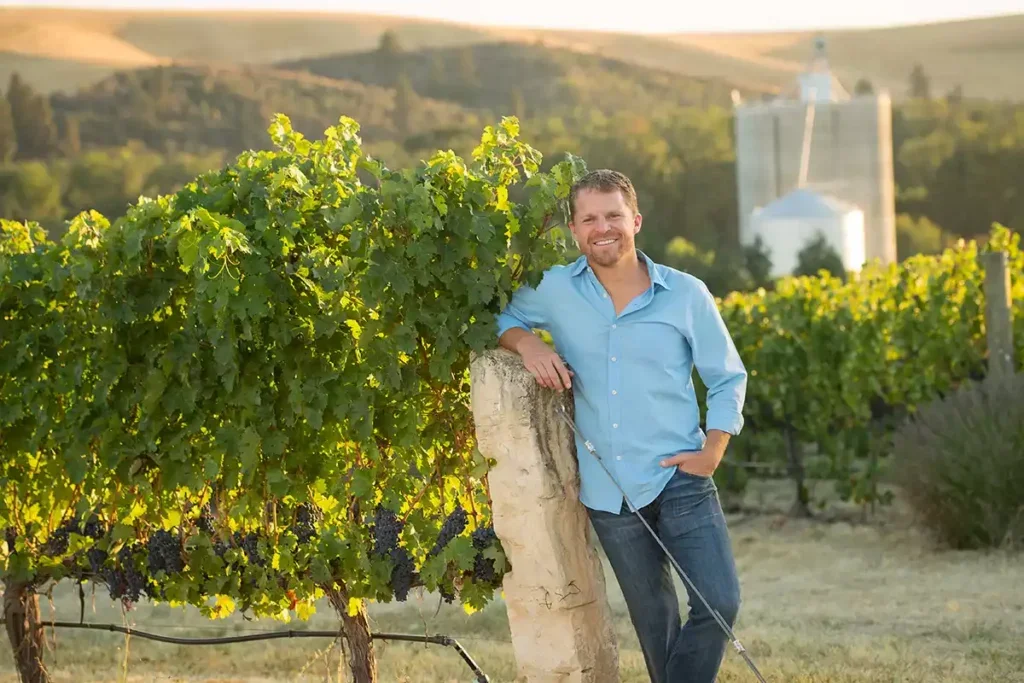
Water rights are the major limiting factor these days. “There are no new water rights in the valley,” Figgins says, so you have to move water around on paper. They’ve bought property lower in the valley that will go unplanted just so they can use the water rights at their new farm in Mill Creek. Seven Hills, one of Walla Walla’s most famous vineyards, faced similar challenges, and had drop wells down almost 1,300ft (400m) to tap a viable aquifer.
Farther west, Red Mountain had long been considered useless for agriculture, so had no water rights assigned to it; with only 6in (150mm) of rain each year, the AVA is, in ecological terms, a desert. When Jim Holmes and John Williams decided to plant vineyards there in 1975, the well digger they hired thought he was on a fool’s errand. Fortunately, they struck a generous aquifer, just a few meters beyond the 500ft (150m) depth they had originally set themselves as an outer limit.
Red Mountain
If Walla Walla is the best known of the state’s AVAs, the much smaller Red Mountain AVA must rate a close second, at least among those with deep pockets. Williams and Holmes’s project there, Kiona, initially focused on white grape varieties like Riesling and Chardonnay; white grapes were considered to be the financially viable choice at the time. But it was their Cabernet Sauvignon that excited local winemakers, and today red grapes—Cabernet Sauvignon, Merlot, and Syrah—make up the vast bulk of the AVA’s 3,950 acres (1,600ha) of vineyard plantings.
Kiona farms about 27o of those acres (110ha), its vineyards spread over five properties; they grow 20 different grape varieties, including some surprises like Lemberger, but Cabernet Sauvignon makes up more than half of its plantings. It makes its own wines and sells grapes to about 75 wineries. Holmes and Williams had parted ways amicably in 1994; Holmes took one of the properties known as Ciel du Cheval, which has become a famed vineyard in its own right, featured in wines from DeLille, Januik, and many others; it started making its own wines under the Côtes du Ciel label in 2012.
Powerful reds, mostly Cabernet Sauvignon-based, are Red Mountain’s calling card, but the wines typically lean toward power and focus rather than growing broad or overly heavy. Despite a southwestern aspect that soaks up the afternoon sun, a dramatic diurnal temperature shift—41°F (23°C) is typical—helps preserve acid in the grapes. Fruit from Kiona or other Red Mountain vineyards might make its way east to Walla Walla or west to Woodinville, or even beyond to Andrew Will on Vashon Island in Puget Sound; they have been sourcing from the Ciel du Cheval vineyard since their first vintage in 1989.
Only 15 wineries are actually located within the AVA, including one of the highest-profile investments from outside the US, Col Solare. For almost 30 years, the project was a partnership between Marchesi Antinori and Ste Michelle Estates, but just this summer the former bought out Ste Michelle and now has complete ownership. European investment in Washington wine has been relatively slow compared to that found in neighboring Oregon; alongside Col Solare, Valdemar from Rioja and Ernest Loosen’s Eroica are probably the best known, the latter another collaboration with Ste Michelle.
One advantage foreign investment can bring is access to market. Antinori wines, regardless of their origin, have no trouble finding their place in distributor portfolios, while other wineries often struggle in today’s distribution landscape. “Distributor consolidation is the biggest threat to continued viability,” says JJ Williams, who joined the family business at Kiona Vineyards as sales manager in 2009. “A lot of ink is spilled over Red Mountain wines that people never see; there aren’t many Red Mountain wineries with sufficient volume to be nationally distributed.” At just 25,000 cases, Kiona is one of the AVA’s larger producer in quantity terms, and even it struggles for appropriate partners. “We’re a ‘big’ little winery looking for ‘big’ little distributors like us, family-owned and craft-y. We don’t have the resources to be important to a distributor of size.” America’s distribution system, currently at a point of high consolidation, is not well suited to connecting Washington’s small wineries to wine drinkers; the small brands get lost alongside larger players, Californian or imported, which bring bigger marketing budgets and greater incentive programs to motivate sales people. Direct-to-consumer sales, which bypass the distribution system, can provide some relief. Washington was the only region on the West Coast to see an increase in 2023, but it still amounts to only two thirds of Oregon’s DTC sales in value.
Given its small size and desirability, one would think that all of Red Mountain’s viable acreage would be planted by now, but there are still spots to be explored. The upper ridge was long considered too windswept, too dry, and too lacking in topsoil for wine growing, but at WeatherEye, owner Cameron Myhrvold and his team are disproving that theory—or showing that climate change is driving wine growing to higher elevations, as it is in Mill Creek. The property stretches over the top of the hill for a mile and a half, with vineyards scattered throughout, providing a variety of exposures. In some areas, sagebrush pushes into the rows; in other corners of the property, the wind is so intense that vineyard manager Ryan Johnson took inspiration from the Canary Islands and constructed individual windbreaks for each vine. They’ve favored high-density echelas plantings for many plots, which Johnson says helps manage the intense sun, heat, and wind that the ridge receives, but it varies depending on exposure, slope, and cultivar.
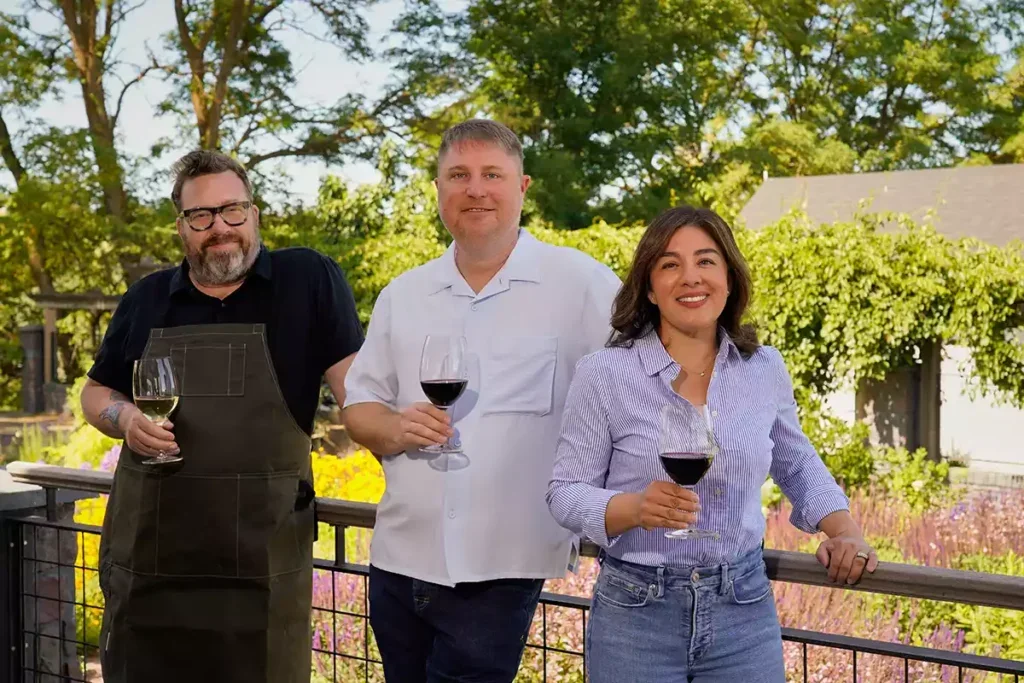
WeatherEye is home to a dozen varieties, mostly Rhône but with some Spanish and a smattering of Bordeaux. Only 37 acres (15ha) of the property’s 358 acres (144ha) are planted, scattered across more than 70 blocks. The farm’s largest customer is Liminal, a joint project between Myhrvold and Marty Taucher, who had already made a splash with Avennia wines. Grapes go to a handful of wineries, including Betz, Kobayashi, Valdemar, and Upside Down. And from the 2018 vintage, Myhrvold hired Todd Alexander from Force Majeure to begin making wines under the WeatherEye name.
While Red Mountain’s rise to prominence coincided with the peak of the so-called international style—
or red wine, all oak and alcohol and extraction—the AVA has weathered that trend well; many of today’s wines are still powerful and rich but nimble and vibrant nonetheless; the power in the wines seems genuine to the terroir rather than to the cellar. Some wineries working with WeatherEye fruit—Upside Down, for example—are uncovering other aspects of the terroir in their wines, tensile and more complex, especially when one gets away from the Bordeaux varieties.
Even away from WeatherEye, newer producers are also stretching the appellation’s fruit into other directions. Maggie and Christophe Hedges put their honeymoon money into purchasing 6 acres (2.5ha) in 2004. They planted Cabernet Sauvignon and, as they watched their young boys play in the vineyards, decided to abandon chemical spraying, converting to organic, and then to biodynamics. In 2014, they made their first wines under the Domaine Magdalena name. Maggie oversees the vineyards, and sister-in-law Sarah Goedhart handles the winemaking. The 2021 Lil Mag weighs in at only 11% ABV, and semi-carbonic maceration and light extraction emphasizing the bright red fruit and freshness of the wine. At 12% ABV, Lil Mag’s big sister, the Domaine Magdelena, is not a bruiser, either; the fruit is a touch darker, and the wine leans in a more overtly savory direction. They’re excellent wines, but in a blind tasting neither would lead you to Red Mountain, or even to Washington; you would probably find yourself scratching your head over which Loire Valley AOC was responsible for these refreshing wines.
Given that Washington State’s rise to prominence coincided, more or less, with the ascendancy of full-bodied, dark-colored reds, the state’s potential for fresher, lighter styles has, until recently, remained little explored. On paper, overall conditions would seem to present some challenges. Not all of Eastern Washington is technically a desert, like Red Mountain, but Washington State east of the Cascades is, by and large, hot—at least during the day. And the day is long: Washington is significantly farther north than California; Red Mountain lies at the same latitude as Lyon; Lake Chelan, at the northern extreme of Washington State’s AVAs, is parallel to Chablis. That means up to 17 hours of sunlight each day during the growing season—about two more hours than Napa. With proper trellising and canopy management, that additional sunlight creates the potential to keep physiological ripening at pace with sugar ripening. The latitude also encourages diurnal variation, as demonstrated on Red Mountain. Throughout much of the Columbia Valley, temperatures regularly drop as much as 45°F (25°C) during the growing season; despite intense heat during the day, the cooler nights help maintain acid in the grapes.
Some of the most interesting of the fresher, lighter wines at the moment come from offbeat varieties. Walla Walla-based Gramercy Cellars makes a Picpoul with the low alcohol, acidity, and salinity you’d expect from the Picpoul de Pinet, despite being sourced from Walla Walla. Syncline also makes Picpoul, as well as Grüner Veltliner and, on the red side, Gamay. Washington State’s white wine suffers more from its reputation for cheap and simple wines than its reds do; there are many more premium examples of the latter to belie that image. Cabernet Sauvignon and Syrah might fight it out for the top red position, though Cabernet plantings are much more extensive. It’s harder to point at a signature white variety for the state. Riesling leads in terms of plantings, much of it going to Ste Michelle, the US’s largest producer of Riesling. But aside from Eroica, a 25-year-old collaboration with Ernst Loosen from the Mosel, most of these Rieslings are aimed at budget drinking and receive little critical acclaim. The state’s most highly regarded whites are scattered across a range of varieties: for Côte Bonneville, Chardonnay; Cayuse, Viognier; Upside Down, Roussanne; DeLille, Sauvignon Blanc/Semillon.

Washington State’s many small, often young producers are turning the ship in the same direction, exploring farther afield in terms of location and grape variety. At an incubator winery in Walla Walla, Ita Winery is showing what can be done with Semillon, once much more common in the state, and has even found a high-elevation spot producing very worthy Pinot Noir; Time and Direction is showing off the virtues of Washington State Mourvèdre and Grenache, while highlights at Seattle-based Cairdeas include Cinsault and Grenache Blanc. The vineyards no longer contracted to Ste Michelle are not destined to disappear; in different hands and with a different approach, they may reveal themselves to be the next great site in Washington, be it on the Wahluke Slope, Rattlesnake Hills, or Lake Chelan. The current shake-up may be what the industry needed for its next step forward. If Veseth is right and price point, independent of grape variety, can be a regional signature, shouldn’t quality be able to do the same when so many voices are singing it—if not in unison, then at least in harmony?

